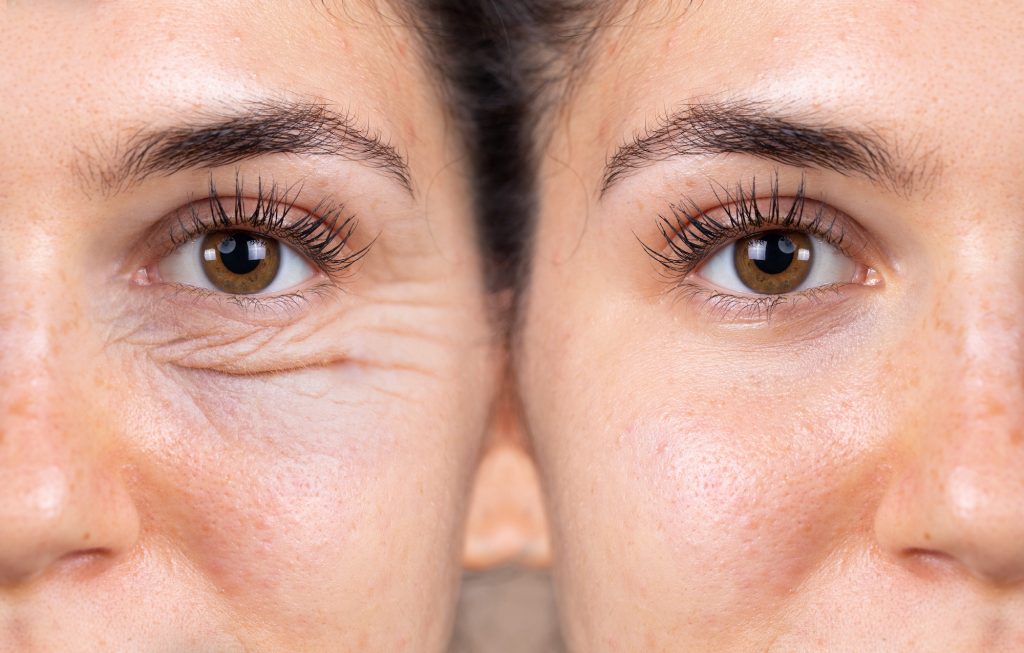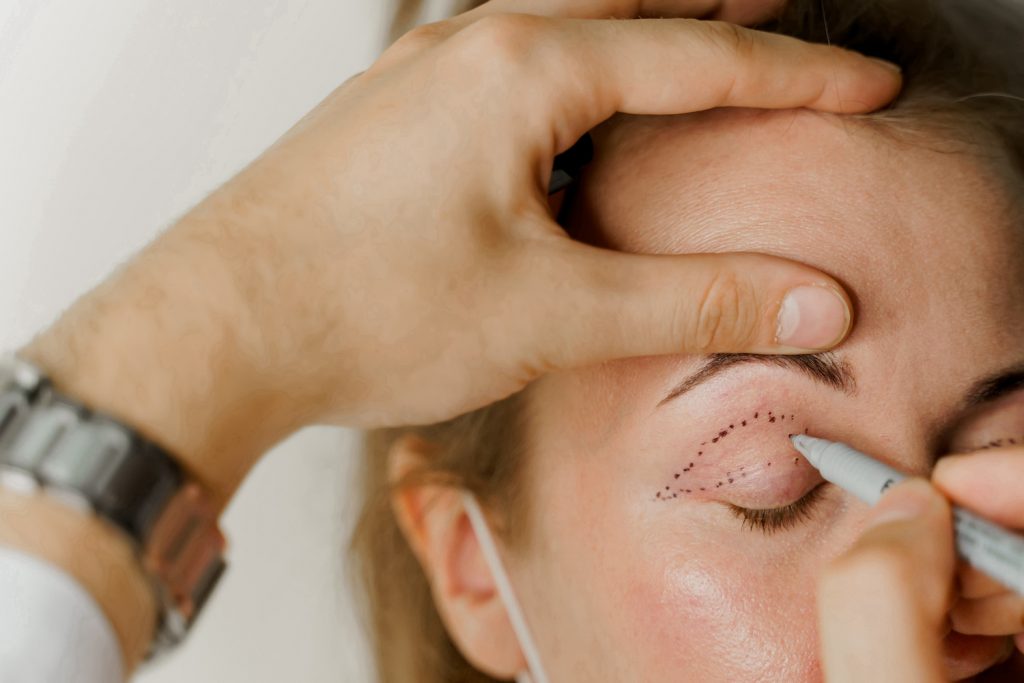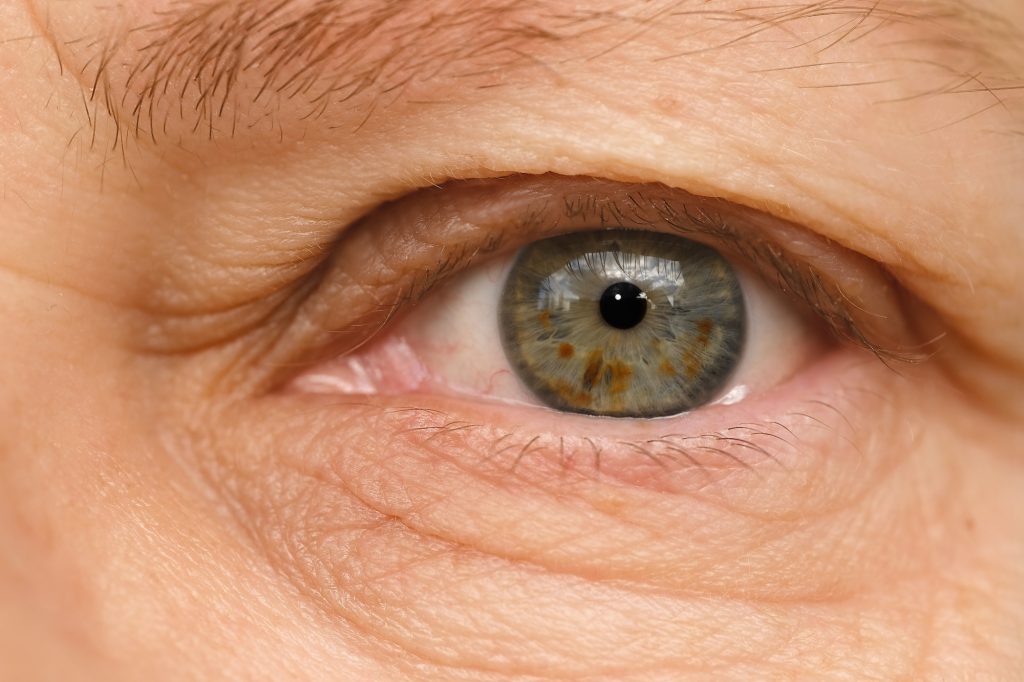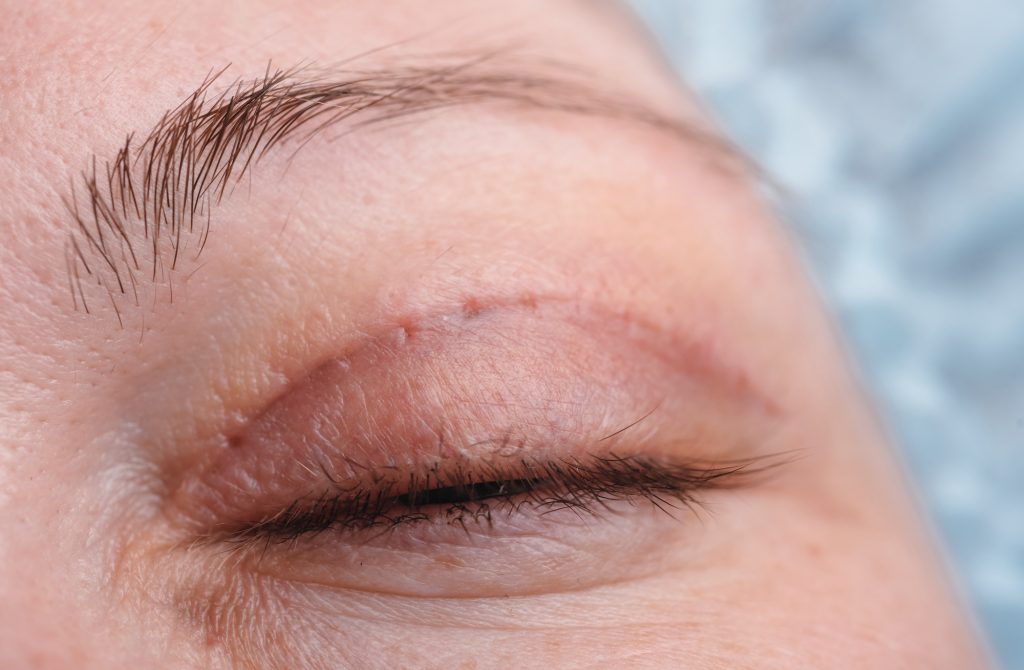Eyelid surgery, also known as blepharoplasty, is a cosmetic procedure that can help to improve sagging or drooping eyelids. It can also improve vision in cases where the eyelids interfere with your ability to see. But before getting approved for this type of surgery, there are steps to take that ensure your safety and satisfaction with results. And in this article, we’ll go through how to qualify for eyelid surgery.
What is Eyelid Surgery?

Eyelid surgery transforms the look of your face
Before we go through how to qualify for eyelid surgery, let’s get to know what it is. Eyelid surgery, also known as blepharoplasty, is a cosmetic procedure that reduces wrinkles and fine lines around the eyes. It also corrects sagging or drooping eyelids and restores a youthful look. This involves removing excess lower or upper eyelid skin, or even both.
During eyelid surgery, a surgeon makes a cut along the natural crease of each eyelid to access and remove skin. In some cases, fat is also removed from the area to achieve better results. And after removing the excess skin and fat, the surgeon will close the cuts with stitches or use adhesive tape for minor procedures.
The Process of How to Qualify for Eyelid Surgery
Consultation

Speak with your doctor or surgeon about the expected results from the procedure
To start knowing if you qualify for eyelid surgery, you will need to consult with a medical professional. During a consultation, discuss details such as the results you want, what the risks and complications are, surgery alternatives, recovery time, and any other questions or concerns you have. The doctor will also assess your health history and current condition to determine how good of a good candidate you are for this plastic surgery.
Tests
Certain tests are also needed for you to qualify for eyelid surgery. These include blood tests, scans and other imaging that the doctor has asked for. On top of this, you should quit smoking at least two weeks before the surgery. This is because smoking gets in the way of healing and recovery from surgery.
Medicare Rebate

Having excessive eyelid skin that causes inflammation qualifies you for a medicare rebate
If you’re asking yourself about whether or not medicare can cover your eyelid surgery, yes they can. To qualify for a medicare rebate for eyelid surgery, the following conditions have to be met:
- A visual field defect is confirmed by an optometrist or ophthalmologist
- Your eyelid skin folds onto itself, causing inflammation known intertriginous skin inflammation
- You have post-traumatic scarring
- You have facial nerve palsy
- Fat around your eyes are displaced because of bulging eyes, also known as exophthalmos
- To restore symmetry in the eyes from one of the conditions mentioned above
To prove these conditions and be eligible for a medicare rebate for eyelid surgery, you will need patient notes with documents that include photographic and diagnostic imaging evidence. Private health insurance also covers the cost to varying degrees of lower or upper eyelid surgery when these conditions are met as well.
Please note that if the lower or upper blepharoplasty is needed because of a medical condition affecting just one eye, a second procedure on the other eyelid might be needed for symmetry.
How to Prepare Before Surgery

Wash your face and cleanse it of all makeup and skincare products before your surgery
Once you’ve qualified for eyelid surgery, you’ll need to do some prep before the procedure. The first step for eyelid surgery is to discuss any possible medications or herbal supplements that may interfere with the surgery with your doctor. This includes vitamins, over-the-counter drugs, prescription medications. Your doctor or surgeon will then let you know what to stop taking before the surgery.
It’s also important to avoid alcohol for at least 24 hours before and after the eyelid surgery. And to also help your recovery afterwards, eat a light meal before arriving at the hospital or clinic to reduce any nausea during anesthesia.
In terms of your face, clean your eye area and get rid of any makeup or skincare products before going into surgery. Washing your face with mild soap and water helps remove dirt and oil from your skin which increase the risk of infection after the eyelid surgery.
Post-surgery Care

After eyelid surgery, the skin around the treated area can get slightly irritated
After your eyelid surgery, it’s important to expect some degree of discomfort. The recovery period usually includes a few days of swelling, bruising and soreness around and below the eye area. The surgeon will recommend options to help with these side effects of the surgery, including medications and ointments for you to use.
One of the side effects you could get after the surgery is a temporary blurry vision. This lasts for a few days, and is caused by the inflammation of the eyes that the surgery gives. Eye drops and other ointments can be prescribed to help protect the eyes and keep them lubricated during this time. You should also avoid makeup and any activity that increases eye strain until advised otherwise by your doctor or surgeon.
Another of the more common side effects after your surgery are dry or sticky feeling eyes. This one could last a few weeks, with blinking exercises and eye drops as the best way to relieve it. If your eye irritation persists for over two weeks, it’s important to contact your doctor or surgeon for further evaluation.
Are you ready for eyelid surgery?
So, how do you qualify for eyelid surgery? You’ll need to ask your doctor or surgeon in a consultation and see what their assessment of your situation is, including if you have any existing medical conditions. When qualified, getting an eyelid surgery not only transforms the look of your face, but also your quality of life. And to get the best advice and treatment, contact us at Northern Beaches Cosmetic Surgery to book a consultation today.

